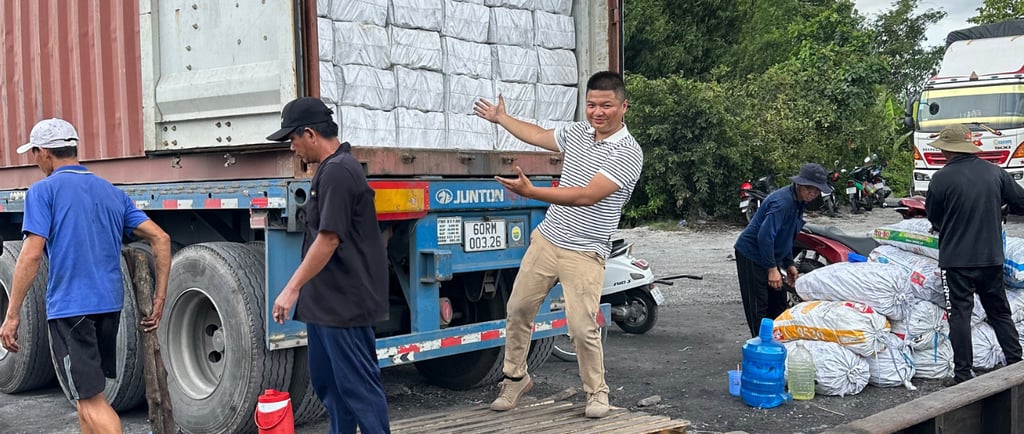The Heart of the Heat: A Look Inside Vietnam's Premium Mangrove Charcoal Production
Discover how Earthange, a leading Vietnam mangrove charcoal supplier, crafts premium, long-burning charcoal. Our sustainable Binchotan-style process ensures superior quality for restaurants and distributors.
5/15/20253 min read


For a professional chef or a discerning distributor, charcoal isn't just fuel; it's a critical ingredient. It dictates the sear on a steak, the flavor infused into grilled vegetables, and the efficiency of a busy kitchen. The search for a consistent, high-performance charcoal leads many to one of the world's most prized sources: Vietnamese mangrove.
At Earthange, we are more than just a mangrove charcoal supplier; we are artisans of a time-honored tradition. We understand that our clients need a product that delivers intense heat, burns for hours, and produces minimal smoke. Here’s an inside look at how we transform dense, sustainable mangrove wood into the premium charcoal that powers professional kitchens around the globe.
Why Settle for Anything Less Than Mangrove?
Before we delve into the "how," let's touch on the "why." Mangrove wood, sourced from the coastal regions of Vietnam, is exceptionally hard and dense. This natural density is the secret behind its legendary performance:
Intense, Sustained Heat: Reaching temperatures well over 800°C (1470°F), it provides the perfect searing power.
Remarkable Longevity: With a burn time of 4 to 6 hours, it drastically reduces replenishment needs during peak service, making it cost-effective.
Clean-Burning: Our process results in a virtually smokeless and odorless burn, ensuring the food's natural flavor is the star of the show.
Minimal Ash: High-purity carbonization means less than 3% ash content, ensuring easier cleanup and consistent airflow in the grill.
This combination of features makes it the gold standard for applications like Japanese Yakitori, open-flame grilling, and professional BBQ.
(Image: A shot of neatly stacked mangrove wood logs, ready for the kiln, emphasizing the quality of the raw material.)
Alt-text: Sustainably sourced mangrove wood logs at Earthange's facility in Vietnam, prepared for carbonization.
The Earthange Method: A Step-by-Step Journey to Perfection
Our production process is inspired by the meticulous Japanese Binchotan method, which creates a type of high-grade "white charcoal." This isn't a quick burn; it's a patient, controlled transformation.
Step 1: Sustainable Sourcing & Selection
Our process begins in the forest, with a deep commitment to sustainability. Earthange partners with licensed, government-regulated farms that practice responsible forestry. We use wood from selective pruning or designated clearance areas, ensuring the vital mangrove ecosystem is preserved for future generations. Only the healthiest, densest wood is chosen to become Earthange charcoal.
Step 2: The Art of Stacking the Kiln
The selected wood is cut to uniform lengths and carefully stacked inside our traditional brick or earthen kilns. This isn't random piling; it's a strategic arrangement that dictates airflow and heat distribution. Perfect stacking is the first key to ensuring every single piece carbonizes evenly.
Step 3: Low-Temperature Pyrolysis (The Slow Bake)
Once the kiln is sealed, we begin the carbonization process. For several days, the wood is "baked" at a relatively low temperature (around 200-400°C) with very limited oxygen. This slow, gentle process, known as pyrolysis, breaks down organic compounds and methodically removes moisture, wood vinegar, and tars, steadily increasing the carbon content.
Step 4: High-Temperature Refining (The Final Blast)
This is the defining stage that separates Earthange charcoal from the rest. Near the end of the process, we open the air vents to rapidly raise the kiln's internal temperature to over 1000°C. This intense heat incinerates any remaining impurities, creating an incredibly pure carbon structure (often over 95% carbon). This is what gives our charcoal its density and metallic, ringing sound when struck.
Step 5: Rapid Cooling & The "White" Finish
The glowing, red-hot charcoal is immediately pulled from the kiln and smothered in a prepared mixture of sand, soil, and ash. This process, called quenching, cools the charcoal quickly, locking in its hard, dense structure. It also leaves a whitish-grey residue on the surface, which is how this Binchotan-style charcoal earned the name "white charcoal."
Step 6: Rigorous Quality Control and Packaging
Perfection is non-negotiable. Every piece of charcoal is hand-sorted and inspected by our quality control team. We check for cracks, incomplete carbonization, and proper density. Only the pieces that meet our stringent standards are packed into durable, branded bags, ready for export. When you open a bag of Earthange charcoal, you're opening a promise of quality.
Partner with a Premier Vietnam Mangrove Charcoal Supplier
Choosing your charcoal supplier means choosing a partner in your business's success. Reliability, consistency, and quality are paramount.
With Earthange, you are guaranteed:
A Superior, Consistent Product: Our meticulous process ensures you receive the same high-performance charcoal in every order.
A Direct & Transparent Supply Chain: By working directly with us, the manufacturer, you benefit from competitive pricing and clear communication.
A Commitment to Sustainability: Offer your customers a product that is not only high-quality but also responsibly sourced.
Ready to fuel your passion with the world’s finest charcoal? The team at Earthange is here to help.
Visit Earthange.com or contact us today to request a sample and receive a personalized quote. Let's fire up a successful partnership.
Earthange
Your trusted charcoal partner from Vietnam
Contact
© 2025. All rights reserved. by Earthange INC
